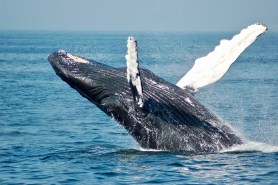

Renowned film director of the 1997 Titanic film featuring Kate Winslet and Leonardo DiCaprio and ocean super-fan James Cameron has weighed on the safety of the Titan submersible.
Cameron said that he suspected a tragedy as soon as he heard about it.
Videos by Outdoors
“I felt in my bones what had happened,” he said. “For the sub’s electronics to fail and its communication system to fail, and its tracking transponder to fail simultaneously – sub’s gone.”
Cameron is an experienced deep-sea diver and has made 72 deep submersible dives, including 33 to the Titanic wreck site. Of these dives, 51 were in Russian Mir submersibles to depths of up to 16,000 feet, which he used to go to the Titanic wreckage himself.
Cameron has been to the deepest-known part of the ocean, the Mariana Trench, but he used a Deepsea Challenger submersible for his expedition to the trench, which took him down to 35,800 feet. The Titanic wreck sits at 12,500 feet below the surface of the ocean.
Cameron said he personally never had faith in the sort of carbon-fiber cylindrical hull that OceanGate decided to use for its submersible, telling Reuters it was a “horrible idea.”
The differences between the Titan submersible and the ones that Cameron used for his expeditions primarily involve security and safety checks, compartments, materials used, and robotics.
The Deepsea Challenger was taken on several deep-water test dives to progressively greater depths before humans went onboard. Data collected during these test dives helped refine and optimize the submersible’s design.
The Deepsea Challenger Cameron used for many of his deep-sea journeys is constructed using a combination of high-strength steel and titanium. It has a separate compartment for the crew made of forged steel, which is protective against the extreme conditions of the deep sea.

The Titan was constructed with titanium but with carbon fiber rather than high-strength steel and titanium. Also, there was no separate crew compartment.
Pressure chambers are used to subject different components, including the crew compartment, to pressures equivalent to those experienced in the deep ocean.
OceanGate’s Titan specifications include a Sub C Imaging 4K Rayfin camera for capturing detailed footage of the underwater environment, a Teledyne 2D sonar for mapping the underwater topography and detecting objects, 40,000 lumens of external lights, and a 2G Robotics laser scanner to help create detailed 3D maps.
The Titan also used Integrated Navigation System (INS) and Ultra-Short BaseLine (USBL) technology to assist in navigation and positioning.
One of the key differences between the Challenger and the Titan is the lack of robotic arms on the Titan. Theories suggest that to avoid getting stuck in parts of the wreckage of the Titanic, OceanGate opted to avoid robotic arms.
In 2018, Will Kohnen, the chair of the Marine Technology Society’s Submarine Committee wrote to OceanGate CEO Stock Rush, who was piloting the Titanhttps://outdoors.com/bear-grylls-on-missing-sub-where-theres-life-theres-always-hope/ vessel that imploded earlier this week, expressing concern about the development of the Titan and its planned Titanic expeditions.
“Our apprehension is that the current experimental approach adopted by OceanGate could result in negative outcomes (from minor to catastrophic) that would have serious consequences for everyone in the industry,” Kohnen wrote, according to a copy of a letter obtained by the New York Times.
OceanGate said in a 2019 blog post that the certification process only assessed the vessels themselves, not operational safety, which it took seriously. Rush also apparently told Smithsonian Magazine that regulation was preventing innovation.
Cameron is “struck by the similarity of the Titanic disaster itself, where the captain was repeatedly warned about ice ahead of his ship, and yet, he steamed up full speed into an ice field on a moonless night, and many people died as a result.”
The deep-submergence community is small, Cameron said, adding that he’s known Titan passenger Paul-Henri Nargeolet—the legendary French submersible pilot known as “Mr. Titanic”—for 25 years.
“Now there’s one wreck lying next to the other wreck,” Cameron said, “for the same damn reason.”









